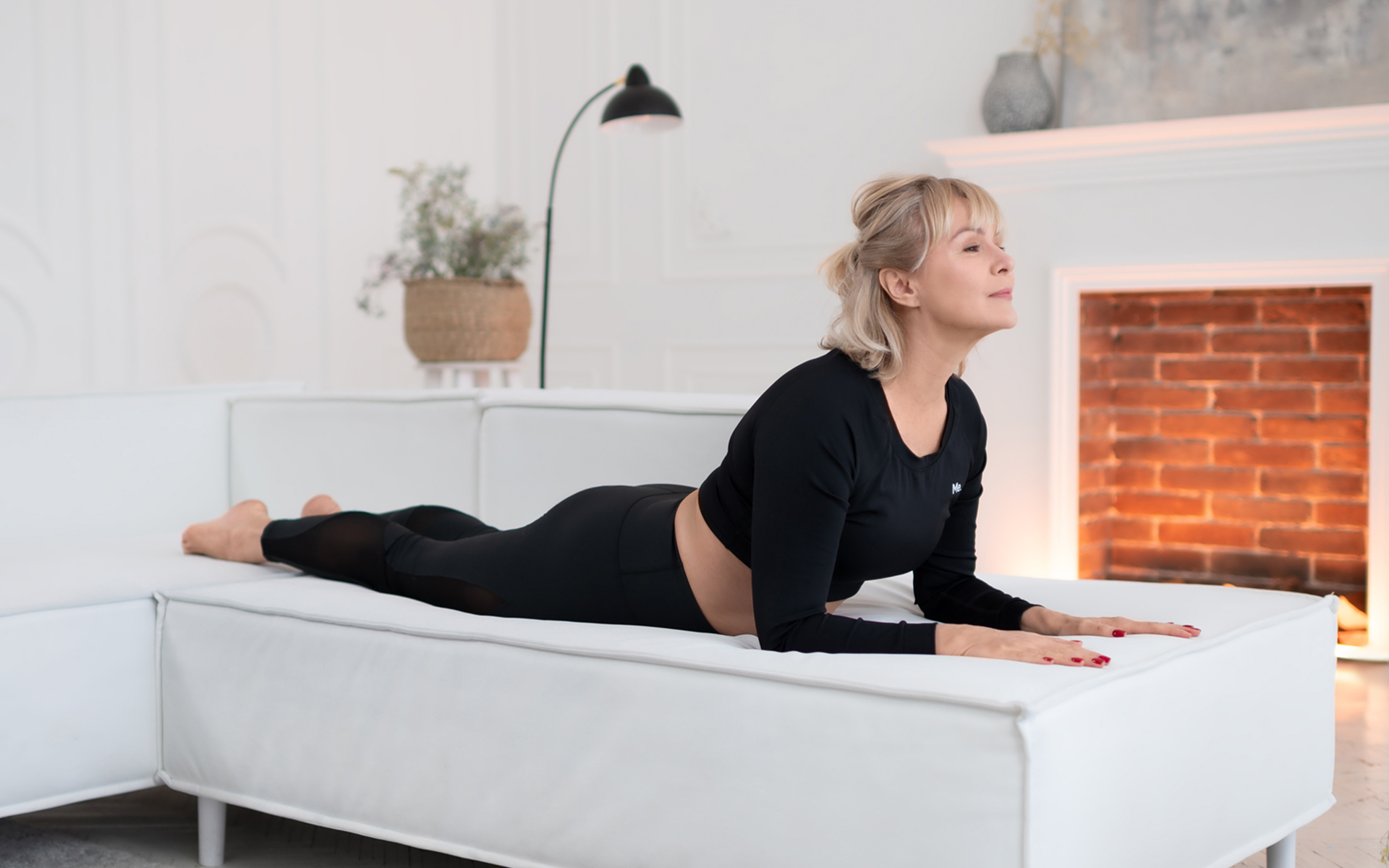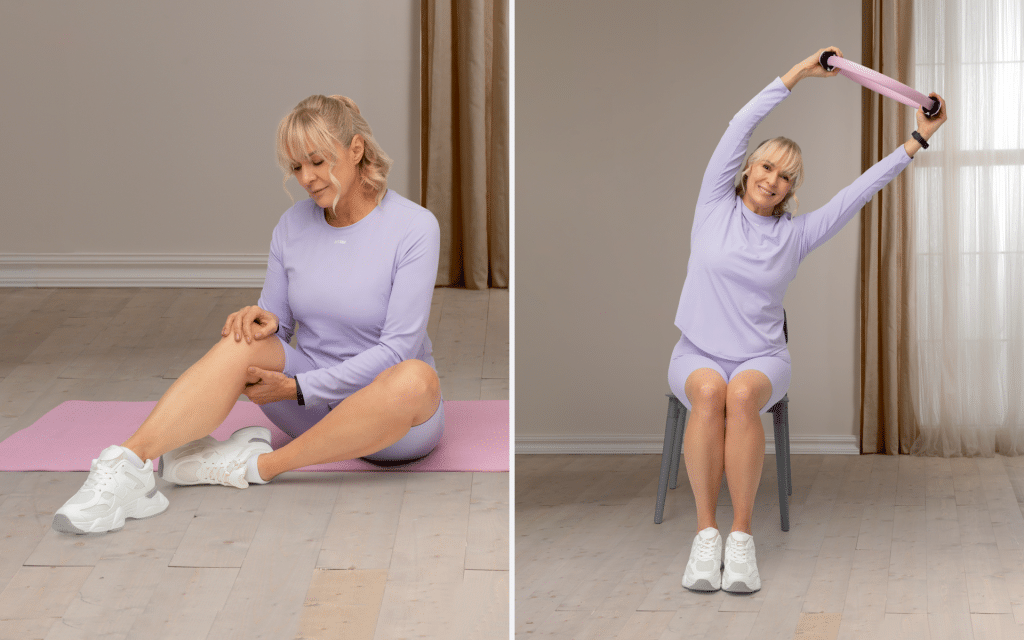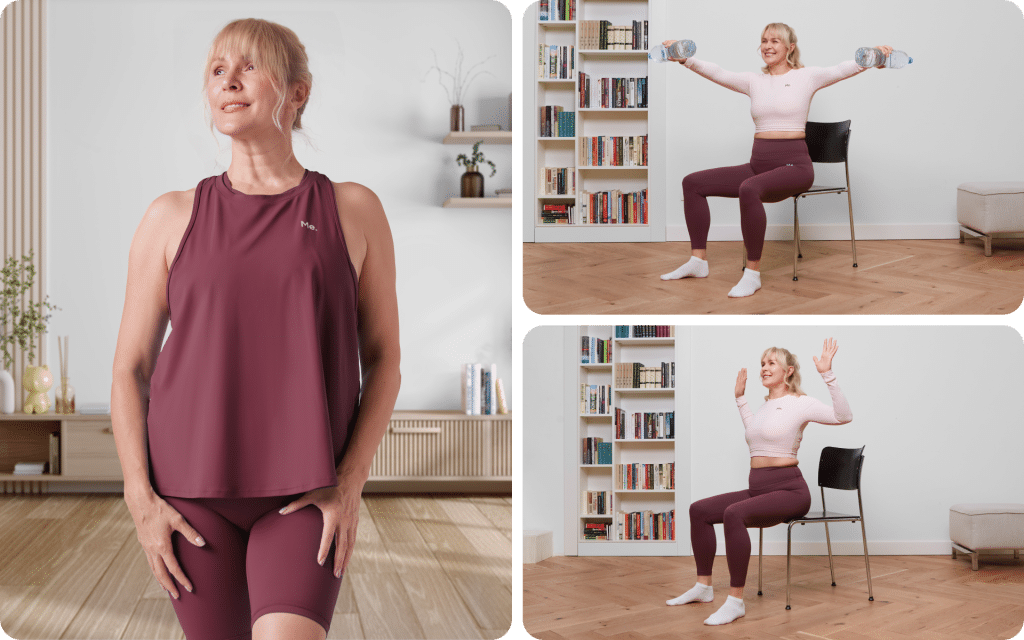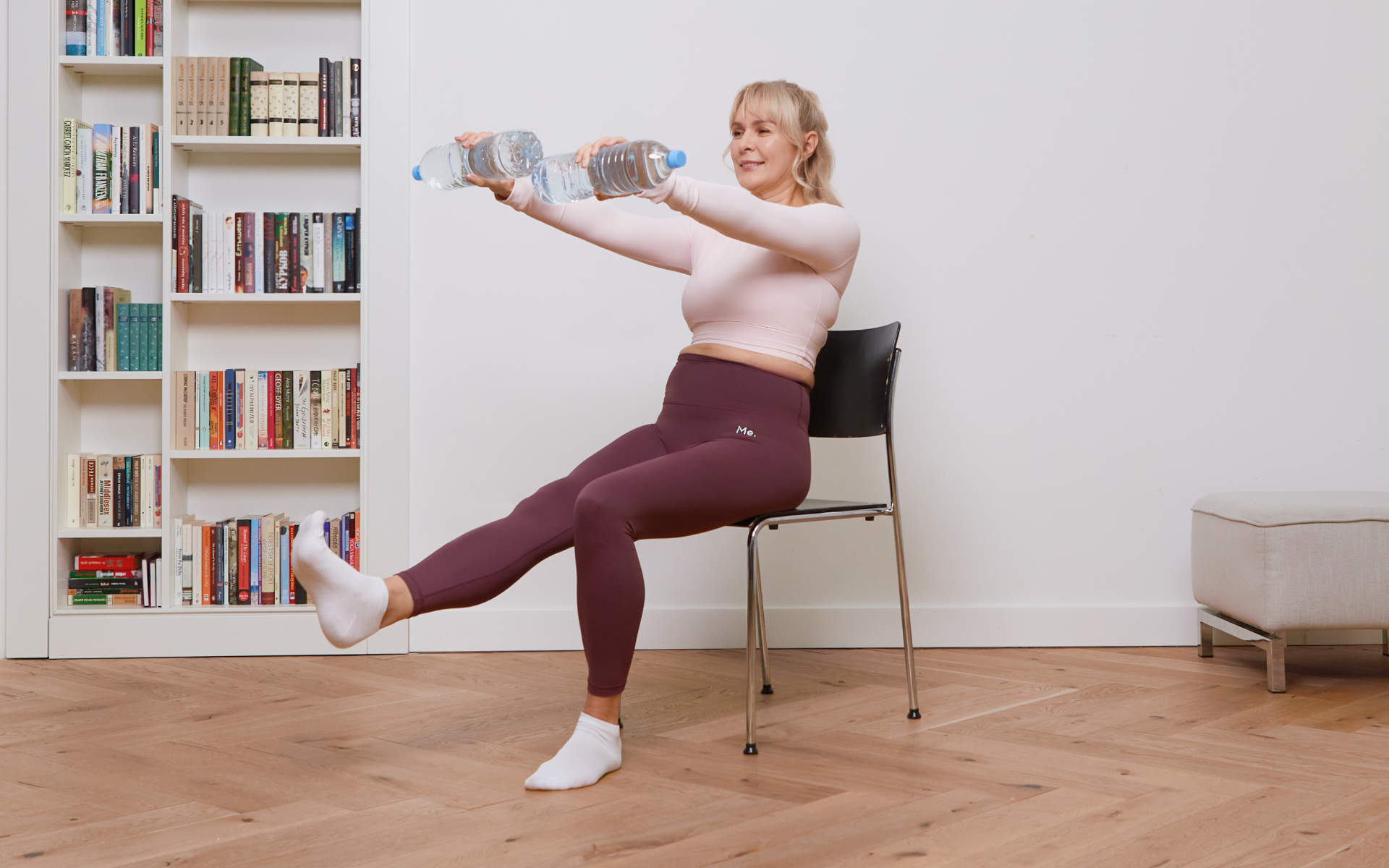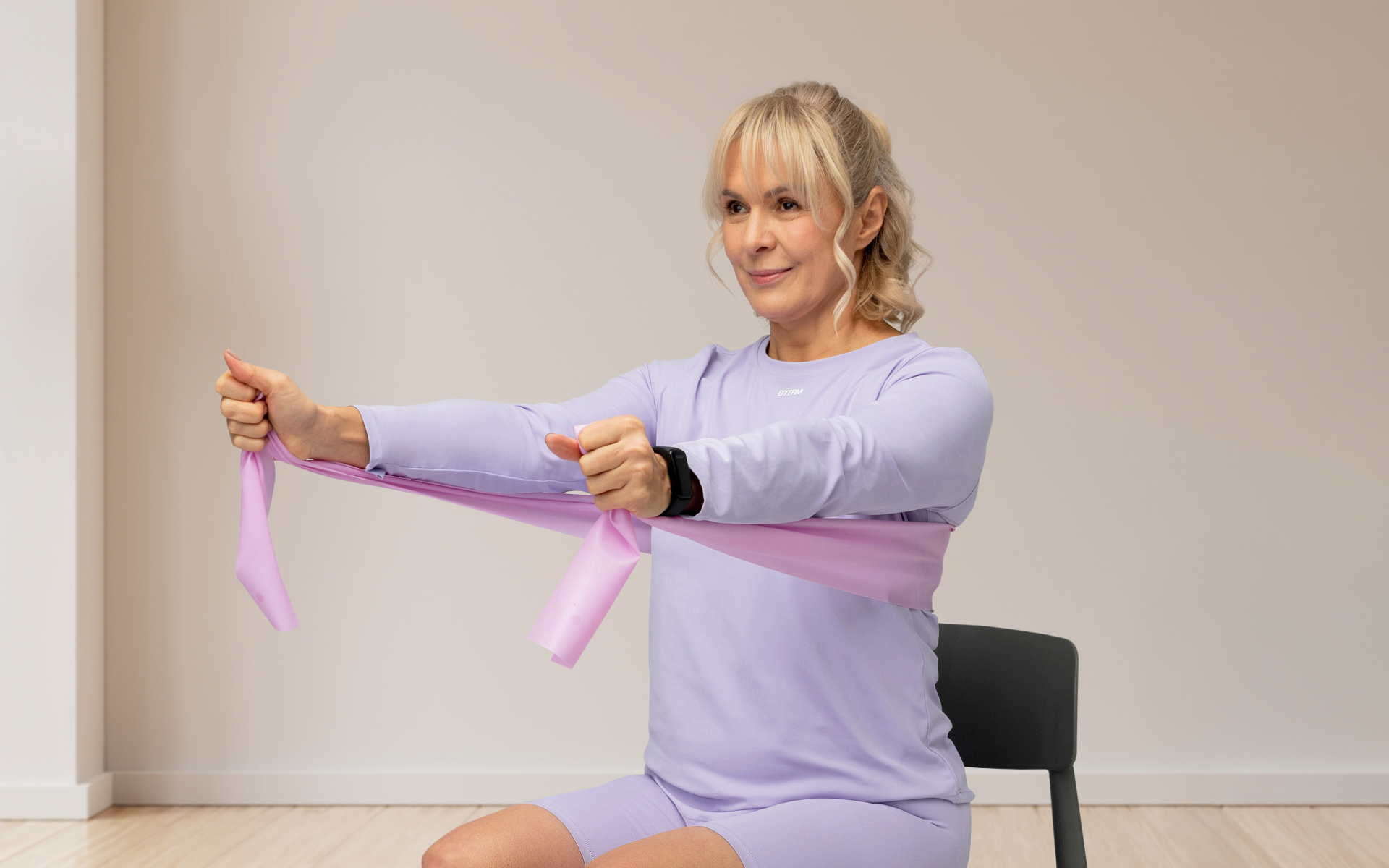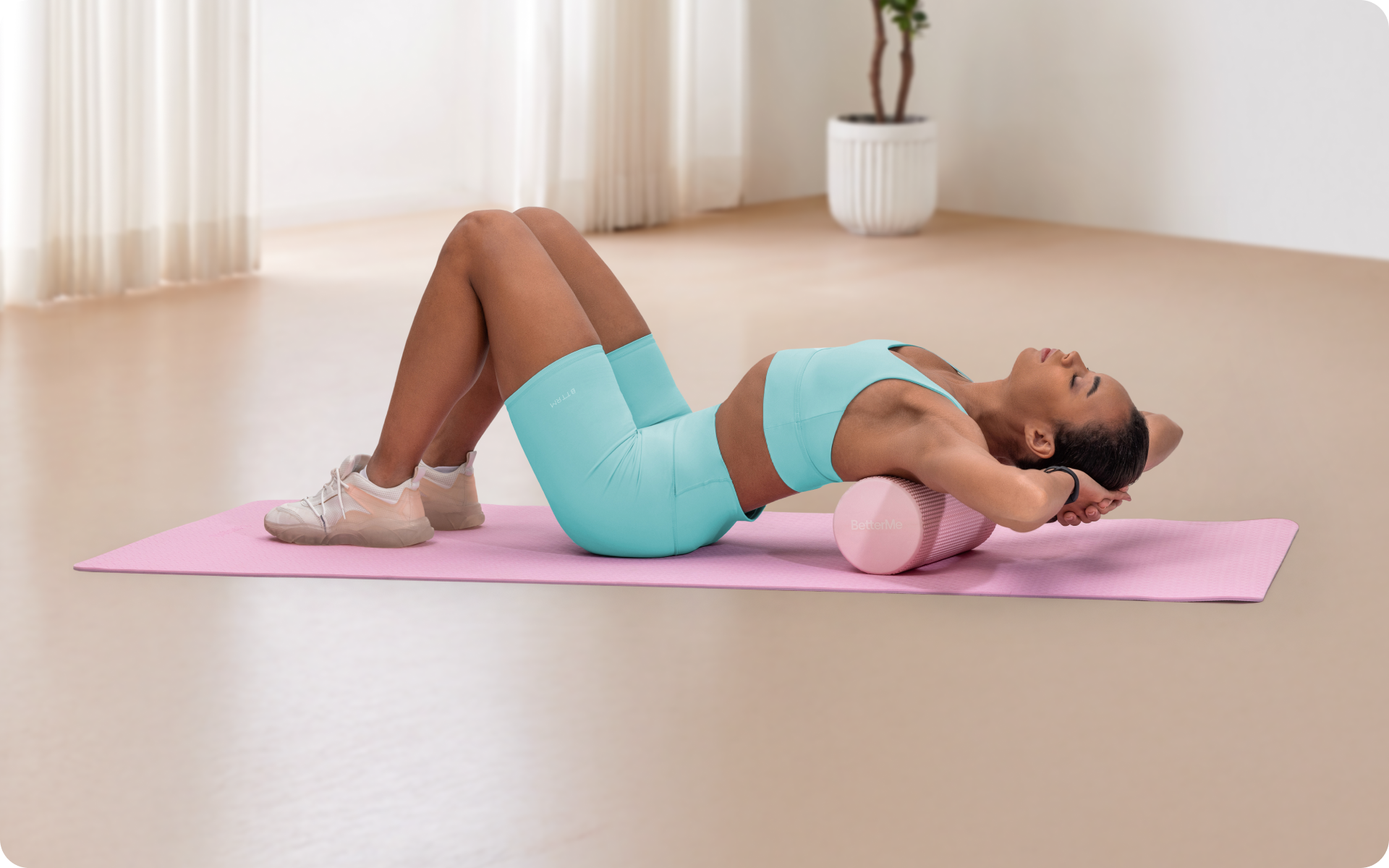Modern life seems to be all about hunching over computers and phones, but our spines aren’t designed for such repetitive stress. This all too often results in stiffness and pain in the upper back and spine has become increasingly common. For example, a scientific study found that prolonged mobile phone use increases pressure on the discs and ligaments between the cervical vertebrae, which contributes to the development of neck pain (1).
Fortunately, there are a few simple stretches that can help relieve upper back and spine pain and stiffness. The purpose of upper back and spine stretches is to lengthen and release the muscles that run along the length of the spine. They may also help increase the range of motion in the shoulders and neck.
In this article, we’ll show you some of the best upper back and spine stretches to help relieve pain and stiffness. We’ll also provide a step-by-step guide on how to perform each stretch correctly.
If you’re looking for relief from upper back and spine pain, stiffness, or tightness, read on.
How Do You Stretch the Upper Back and Spine Muscles?
Here are some upper back and spine stretches you can try:
- Seated Forward Bend
This stretch is great for lengthening the muscles along the entire length of the spine. It also helps release tension in the shoulders and neck.
To do a seated forward bend:
- Sit on the floor with your legs extended straight.
- Reach your arms up and interlace your fingers.
- Hinge at your hips and fold forward, keeping your back straight.
- Gently lower your head toward your knees.
- Hold for 30 seconds to 1 minute, breathing deeply.
- Child’s Pose
Child’s pose is a restorative yoga pose that is often used to relieve back pain. It stretches the muscles along the spine and also helps release tension in the shoulders and neck.
To do child’s pose:
- Start on your knees: Sit back on your heels with your big toes touching and knees apart.
- Reach forward: Extend your arms straight in front of you, palms facing down.
- Lower your chest: Gently bring your forehead to the floor.
- Relax and breathe: Let your hips sink back and your shoulders soften.
- Hold and release: Stay for 30 seconds to 1 minute, then slowly return to a seated position.
- Cat-Cow Pose
Cat-cow pose is a common yoga stretch that helps release tension in the back, neck, and shoulders. It also increases the range of motion in the spine.
To do cat-cow pose:
- Start on all fours: Place your hands under your shoulders and knees under your hips.
- Inhale – arch (cow pose): Drop your belly, lift your chest, and look up.
- Exhale – round (cat pose): Tuck your chin, round your back, and pull your belly in.
- Flow with your breath: Continue moving between cat and cow with each inhale and exhale.
- Repeat for 10 rounds: Move slowly and mindfully, then return to a neutral spine.
- Thoracic Extension
The thorax is the part of the spine that runs from the neck to the lower back. The muscles in this area can often become tight and contribute to upper back and spine pain.
To do a thoracic extension:
- Lie on your stomach: Place your forehead on the mat and extend your arms forward or place your hands under your shoulders.
- Engage your core: Keep your legs relaxed and press your pelvis into the mat.
- Lift your chest: Inhale and gently lift your upper chest off the floor, using your back muscles (not your hands).
- Hold and breathe: Keep your gaze slightly forward and shoulders away from your ears, holding for a few breaths.
- Lower slowly: Exhale and return to the starting position, repeating 10 times.
- Neck Roll
This simple stretch helps release tension in the muscles of the neck. It’s also a great way to increase the range of motion in your neck.
To do a neck roll:
- Sit or stand tall: Keep your spine straight and relax your shoulders.
- Drop your chin: Gently lower your chin toward your chest.
- Roll to one side: Slowly tilt your head to one shoulder, feeling a stretch in the opposite side of your neck.
- Circle back and around: Continue rolling your head back and over to the other shoulder.
- Repeat and reverse: Complete 5 or so slow circles, then switch directions.
- Shoulder Shrugs
Shoulder shrugs are a great way to release tension in the muscles of the shoulders and neck. They also help increase the range of motion in the shoulders.
To do shoulder shrugs:
- Stand or sit tall: Keep your back straight and arms relaxed at your sides.
- Inhale and lift: Raise both shoulders toward your ears as high as possible.
- Hold briefly: Squeeze your shoulders at the top for 1-2 seconds.
- Exhale and release: Slowly lower your shoulders back down.
- Repeat: Perform 8-10 repetitions, keeping the movement smooth and controlled.
Whether you’re a workout beast or just a beginner making your first foray into the world of fitness and dieting – BetterMe has a lot to offer to both newbies and experts! Install the app and experience the versatility first-hand!
- Arm Circles
Arm circles are a dynamic stretch that helps release tension in the muscles in the shoulders, upper back, and spine. They also help increase the range of motion in the shoulders.
To do arm circles:
- Stand tall: Keep your feet hip-width apart and extend your arms straight out to the sides at shoulder height.
- Start small circles: Move your arms in small forward circles, keeping them controlled.
- Gradually increase size: Enlarge the circles as you continue the motion.
- Reverse direction: After 10-15 seconds, switch to backward circles, starting small and getting larger.
- Repeat and control: Perform for 30 seconds in each direction, keeping your core engaged and shoulders relaxed.
- Trunk Rotation
Several muscles make up your trunk – the large muscles in your back, sides, and abdomen. These muscles can often become tight and contribute to lower back pain. As your lower back is connected to your pelvis, trunk rotations can also help release tension in the hips.
To do a trunk rotation:
- Sit tall: Sit on a chair or the floor with your back straight and feet flat on the ground (if on a chair).
- Place your hands: Rest them on your thighs or cross your arms over your chest.
- Inhale and lengthen: Take a deep breath in to straighten your spine.
- Exhale and twist: Gently rotate your torso to one side, keeping your hips still.
- Hold and return: Pause for a moment, then inhale as you return to the center. Repeat on the other side.
- Wall Stretch
The wall stretch is a simple move that you can perform anywhere – even while you’re at work. This stretch helps release tension in the muscles of the chest, shoulders, upper back, and spine.
To do a wall stretch:
- Stand facing a wall: Place your hands on the wall at shoulder height, slightly wider than shoulder-width apart.
- Step back: Walk your feet back until your arms are fully extended, keeping a slight bend in your knees.
- Hinge at your hips: Push your hips back and lower your chest toward the floor, keeping your back straight.
- Hold and breathe: Feel the stretch in your shoulders, chest, and back while holding for 20-30 seconds.
- Release and reset: Slowly walk forward to stand upright and repeat if needed.
- Hang from a Pull-Up Bar
Hanging from a pull-up bar is a great way to release tension in the muscles of the back, shoulders, and arms. It’s also a great way to improve your grip strength.
To hang from a pull-up bar:
- Grip the bar: Stand under the pull-up bar, reach up, and grab it with both hands, palms facing forward or toward each other.
- Engage your grip: Wrap your fingers tightly around the bar and keep your arms fully extended.
- Lift your feet: Slowly lift your feet off the ground, letting your body hang freely.
- Relax and breathe: Keep your shoulders slightly engaged but not shrugged, and breathe deeply while hanging.
- Controlled release: After 20-30 seconds (or as long as you’re comfortable), gently lower your feet back to the ground.
Read more: Chair Yoga for Mobility: 10 Must-Have Exercises for an At-Home Practice
How to Perform Upper Back and Spine Stretches Safely and Effectively
Stretching correctly is important in order to avoid injury and get the most out of your stretches. It’s important to note that while stretching has many benefits, its effects can vary depending on the type and timing. Here are a few tips on how to perform upper back and spine stretches safely and effectively:
Static and Dynamic Stretches: What’s the difference?
Scientific studies have found that static stretching (holding a stretch for a short period, typically 15-60 seconds) before activities requiring maximal strength (very strenuous exercises) may temporarily reduce performance (1). In contrast, dynamic stretching, which involves active movements that take muscles through their full range of motion, can effectively prepare the body for exercise. Dynamic stretches increase muscle temperature and decrease stiffness, enhancing performance and reducing injury risk (2).
Therefore, incorporating dynamic stretching during warm-ups and reserving static stretching for post-exercise may be the most effective approach. This strategy leverages the performance benefits of dynamic movements before activity and utilizes static stretching afterward to help with flexibility and recovery.
- Warm Up
Warming up is necessary as it helps prepare your body for physical activity and prevents injury (3).
A simple way to warm up is to do 5 minutes of light cardio such as walking or jogging. This increases blood flow to your muscles and gets them ready for stretching. You can also turn any movement into a dynamic stretch and perform it in a controlled, repetitive motion through a full range of motion. Start slow, then gradually increase speed while maintaining form. For example, squats, arm circles, leg swings, and torso twists can be done fluidly to boost flexibility and blood flow, prepping the body for activity.
- Stretch Slowly and Gently
When stretching, it’s important to go slowly and gently at first. Don’t force your body into a stretch, but rather let it happen gradually. You should feel a mild pulling sensation, but no pain. If you feel pain, ease off the stretch or stop completely.
- Hold Each Stretch
Hold each stretch for at least 30 seconds to 1 minute. This will allow your muscles time to relax and lengthen.
- Remember to Breathe Normally
Taking deep breaths in through your nose and out through your mouth while stretching helps you relax and improves oxygen flow to your muscles. This promotes better circulation, reduces tension, and enhances flexibility, which makes your stretches more effective and comfortable. Controlled breathing also prevents holding tension in your body, which allows for a deeper and safer stretch.
Avoiding Common Stretching Mistakes
There are a few common mistakes people make when stretching. These can lead to injury and decreased effectiveness of the stretch. Here are a few things you should avoid:
- Bouncing: When performing dynamic stretches, it’s important to avoid bouncing. This puts unnecessary stress on your muscles and joints and can lead to injury.
- Overstretching: Stretching too far can lead to muscle strains and tears. It’s important to only stretch to the point where you feel a mild pulling sensation, but not pain.
- Holding Your Breath: When stretching, it’s important to breathe normally. Holding your breath puts unnecessary stress on your body and can make it difficult to relax. Importantly, holding your breath can make you dizzy, causing a safety risk. Controlled breathing also prevents dizziness and supports a steady heart rate, which makes stretching safer and more beneficial.
- Using Momentum: When performing static stretches, it’s important to avoid using momentum. This means that you should move into the stretch slowly and under control.
If you wish to free yourself from all the extra pounds that have been weighing you down for way too long, start using the BetterMe: Health Coaching app and overhaul your entire life!
Preventing Upper Back and Spine Pain and Stiffness
Upper back and spine pain and stiffness are common problems that can be caused by a variety of factors, including bad posture, lack of exercise, and muscle tension (3). Luckily, there are a few simple things you can do to help prevent these problems.
Here are a few tips to help prevent upper back and spine pain and stiffness (4):
- Improve your posture: Proper posture helps prevent strain on your muscles and joints. While seated, make sure your back is straight and your shoulders are relaxed. When standing, keep your weight evenly balanced on both feet and ensure you’re not leaning forward or backward. Check and ensure that your abdominal muscles are engaged when you’re standing – keeping them active and strong helps protect your spine and back.
- Exercise regularly: Exercise strengthens back muscles and improves flexibility. A combination of aerobic exercise (such as walking or swimming) enhances endurance and circulation, while strength training (using weights or bodyweight exercises such as squats) builds stability and prevents injuries. Regular movement keeps the spine healthy and reduces stiffness, which makes daily activities easier and more comfortable.
- Stretch your upper back muscles: Frequently stretching the muscles all along the upper mid and lower back and spine can help prevent stiffness and pain.
- Use proper lifting techniques: To lift safely, stand close to the object with your feet shoulder-width apart. Bend at your hips and knees, keeping your back straight. Engage your core, lift with your legs, and keep the object close to your body. Avoid twisting – pivot with your feet instead. Ask for help if the load is too heavy for you.
- Reduce your sitting time, and when sitting, choose a supportive chair: Prolonged sitting has been linked to several health concerns, from musculoskeletal issues to obesity and cardiovascular risk (5). Take “sitting breaks” – for every hour you’re sitting, take 10 minutes to do a short walk around the house, or choose a few exercises to do, such as bodyweight squats, jumping jacks, or wall push-ups. When sitting for long periods of time, make sure to sit in a chair that provides support for your back. Avoid slouching or sitting in one position for too long.
By following these tips, you can help prevent upper back and spine pain and stiffness. If you do experience these problems, make sure to see a doctor or physical therapist for treatment.
Read more: 10 Seated Yoga Positions For Beginners
When to See a Doctor About Upper Back and Spine Pain
Many times, upper back and spine pain may not be serious and can be treated at home with rest, ice, and over-the-counter pain medication, in addition to a visit to your physical therapist. However, if your pain is severe or persists for more than a few days, you should see a doctor.
In addition, if you experience any numbness, tingling, or weakness in your arms or legs, you should seek medical attention as this could be a sign of a more serious condition (3).
If you’re not sure whether or not your pain is serious, it’s always best to err on the side of caution and see a doctor.
DISCLAIMER:
This article is intended for general informational purposes only and does not serve to address individual circumstances. It is not a substitute for professional advice or help and should not be relied on for making any kind of decision-making. Any action taken as a direct or indirect result of the information in this article is entirely at your own risk and is your sole responsibility.
BetterMe, its content staff, and its medical advisors accept no responsibility for inaccuracies, errors, misstatements, inconsistencies, or omissions and specifically disclaim any liability, loss or risk, personal, professional or otherwise, which may be incurred as a consequence, directly or indirectly, of the use and/or application of any content.
You should always seek the advice of your physician or other qualified health provider with any questions you may have regarding a medical condition or your specific situation. Never disregard professional medical advice or delay seeking it because of BetterMe content. If you suspect or think you may have a medical emergency, call your doctor.
SOURCES:
- Acute Effects of Static Stretching on Muscle Strength and Power (2019, frontiersin.org)
- Acute Effects of Dynamic Stretching on Muscle Flexibility and Performance (2018, link.springer.com)
- The effectiveness of neuromuscular warm-up strategies, that require no additional equipment, for preventing lower limb injuries during sports participation: a systematic review (2012, bmcmedicine.biomedcentral.com)
- Upper Back Pain (2022, my.clevelandclinic.org)
- Adverse Effects of Prolonged Sitting Behavior on the General Health of Office Workers (2017, jlifestylemed.org)
